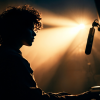The capital markets present several opportunities to potentially make money every day. There are a plethora of instruments to use when expressing your view of future movements regarding specific assets. One of the most efficient ways to accomplish this is to use Contracts for Differences (CFDs). A contract for difference is a security that tracks the changes in another security. The benefits of using these tools far outweigh the costs, depending on your financial goals.
What are CFDs:
A contract for difference is a security that pays you the difference between the purchase price and the sales price. It is geared to track specific capital market instruments which include currency pairs, commodities, indices, ETFs and company shares. A CFD does not have value like a stock and does not pay dividends like a stock, but it will provide you with the opportunity to purchase the CFD shares as well as sell them without having to post the large capital required by most stock brokers. You also do not have to worry about the borrowing costs that you will incur if you attempt to short a stock via a stock broker.
What are the Benefits of CFDs:
CFD trading uses leverage instruments. Your broker views your risk as the maximum loss you could be expected to incur daily. They will provide you with leverage that allows you to significantly increase the capital you control. Many CFDs have leverage of up to 20:1. This means that for every dollar you hold in your account; your broker will lend you $20 to trade. CFDs are traded on margin. This means that you need to continue to post capital if the equity in your account falls below a minimum level. For example, your broker might require that you always have 33% equity in your account and when it drops below that level, a margin call is generated. A margin call is a request for immediate funds. If the request is not met, your broker will have the right to liquidate your positions to cover future losses.
When to Use CFDs:
CFDs are geared to investors who are looking to generate capital gains. This means that you are positioned to benefit if the price of the instrument you are trading moves in the direction that you have speculated on. If you are attempting to generate passive income from stocks, ETFs, currencies or commodities, then CFDs are instruments that do not specifically help your cause. Dividend-producing stocks generally require a large capital layout.
Trading CFDs:
There are several strategies that you can use to generate revenue from CFD trading. You can develop a technical strategy that provides signals. This can be generated by you. Or, you can purchase an automated process of signal generating from a third party. Before you risk your capital, make sure you implement risk management and due diligence. You can also have a fundamental strategy that is driven by monetary policy, supply, and demand for commodities or an earnings-driven stock strategy. However, if you decide to trade, CFDs will provide you with an efficient instrument to speculate on the capital markets.
Read Also:






















